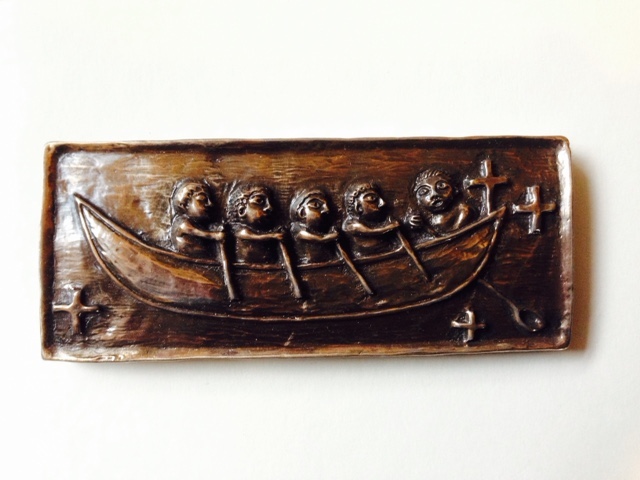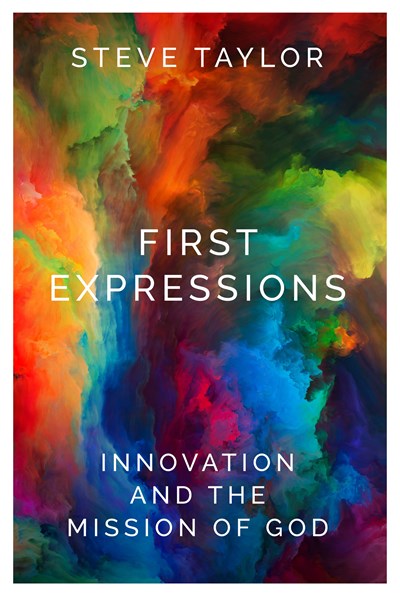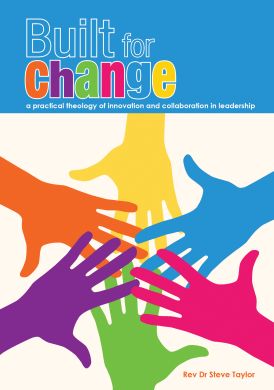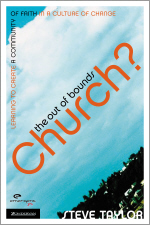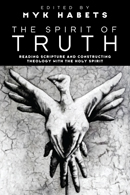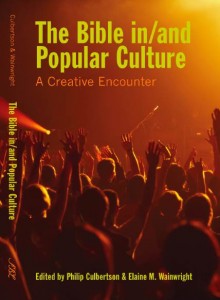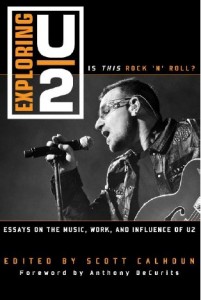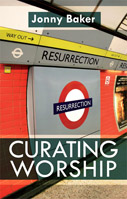Tuesday, May 02, 2017
Resurrection for mission
Some (theological) writing this morning, drawing on the Resurrection to understand listening as the first act of mission …
Rowan Williams offers a way to understand the interplay between Christ, church, creation and culture. In The Dwelling of the Light: Praying with Icons of Christ Canterbury Press: Norwich, 2003, 23-41, Williams introduces a classical Orthodox Resurrection icon. Icons are “written” and “read”: theological documents in which we encounter Christ. Williams points to the way that in a classical Orthodox Resurrection icon, Christ unites, standing on a narrow bridge of rock spanning a dark pit. Christ is grasping Adam with one hand and Eve with the other. He is restoring relationships – between men and women, between humanity and creation, between the mind’s knowledge and the body’s experience.
Williams then draws on Maximus the Confessor and his explanation of Christ as overcoming all the great separations that humans suffer. Williams notes the presence in the icon of characters from the Jewish Scriptures, including David, Abraham, Moses. The result is that “the resurrection is a moment in which human beings are reintroduced to each other across the gulf of mutual resentment and blame; a new human community becomes possible” (31-2). The Risen Christ is reintroducing us, opening the ways by which these characters from Scripture stand in the middle of “our present community, speaking to us about the God who spoke with them in their lifetimes in such a way that we can see how their encounter with God leads toward and is completed in Christ” (34). Thus revelation comes, understood in light of the resurrection. This is then applied to the relationship between Christ and creation. “But if we also bear in mind the context in which Maximus the Confessor sets the work of Christ, we can see here in outline the foundation for understanding the relation of Church and creation” (35-6). The logic is one of extension. “If the Risen Christ takes hold and speaks through the great figures of biblical history … by the same token he speaks through the world around us … he introduces us to that world and requires us to listen to it and receive from it what he wants to communicate.” (36) This is the work of Resurrected Christ, a “very obvious consequence both of the theology that shows Christ uniting what fallenness and sin have departed and of the image of a whole history brought to fulfilment … what Christ does and suffers affects all things, all areas of human experience and so all aspects of human relation, including relation with what is not human” (36-7). Through the Resurrection comes a redemption of creation which is so complete that creation becomes a source of revelation. In creation, experience and culture we can see the redemption that Christ is revealing. We are, in the risen Christ, being required to listen and receive from creation, experience and culture.
This provides a Christology of mission.
- First, mission “opens out” (37) from Christ.
- Second, we are required to listen to what Christ introduces us to, in this case the world which Christ has overcome our separation from.
- Third, our listening will include human experience, which in Christ has been experienced, suffered and to which, in the Resurrection, we are being reintroduced.
- Fourth, human experience, and hence human cultures, are a dimension in which Christ is revealed.
- Fifth, we are listening for what Christ is speaking, what Christ wants to introduce us to.
Thus in the Resurrected Christ is a theology of revelation for mission. God is speaking, through what Christ as experienced, not only in Scripture and the characters from the Jewish Scriptures but also through creation, human experience and human cultures.
Thursday, February 02, 2017
U2 praying the pattern of the Psalms in Paris
A joy yesterday to have a 2,000 word article accepted for Equip a bi-annual publication of Ethos Centre for Christianity and Society. Aware of my interest in U2, they asked me early in January to write something for an upcoming edition on music.
Back in October I was doing research on how religious groups prayed after Paris. Having written a number of times about U2’s live concert performances, I wondered how they responded, given they played days after the Paris bombings. The research in October (watching the iNNOCENCE + eXPERIENCE Live In Paris DVD) never made it into the two conference presentations that resulted.
So when Ethos emailed, I thought it might be an opportunity to use research done, but not likely to find a writing home. I looked back over my research notes: watching U2 DVD’s as research! How did they pray, live, publicly, in the midst of so much pain?
I also was aware of the friendship between Bono (of the band U2) and Eugene Peterson (author of contemporary-language Bible translation The Message) and their common interest in the Psalms.
So over the last few weeks, various scraps on the hard drive began a 2000 word piece, titled
U2 praying the pattern of the Psalms in Paris
Here’s part of the conclusion:
In sum, aware of a broken world, I have examined how music and musicians might respond. Psalms voice the full register of human emotion. The Psalms of lament offer a pattern: call, confession, complaint, curse and confidence in surrender. I have examined how U2 played in Paris and have argued that this pattern is evident, not on a single song, but over a number of songs, stretched over more than sixty minutes. In response to terror, and the resulting emotions of anger and fear, U2 called for help, confessed and complained. But they did not curse. Instead they looked to New Testament resources, to the love of Christ.
It’s my 2nd U2 piece this month, having submitted in the middle of January a 9,500 word chapter for a book on religion and U2 with Bloomsbury, currently titled
God moves in mysterious ways: Performed pneumatology as passionate participation in the evolution of U2’s Mysterious Ways
Two pieces in one month on one band is a bit ridiculous. But it is nice to be writing in the theology and culture interface. It brings to seven the number of things I’ve had published on U2 over the last 6 years. Not something I every expected, but it has been a fun trip. Now back to some real theology! (It also explains the silence on the blog front – only 1 post in the month of January, my most silent month ever. Apologies).
Other work I’ve had published on U2 and lament:
- looking at how they prayed publicly after the Pike River Mining Tragedy in New Zealand (Boase, E.C. and Taylor, S. (2013). Public Lament. In MJ Bier and T Bulkeley, ed. Spiritual Complaint: The Theology and Practice of Lament
. Eugene, USA: Pickwick Publishers, pp. 205-227).
- how U2 memorialise the dead (Taylor, S. (2015). Transmitting Memories: U2′s Rituals for Creating Communal History. In Scott Calhoun, ed. U2 Above, Across, and Beyond: Interdisciplinary Assessments
, Lanham, Maryland, USA: Lexington Books, pp. 105-121.)
Sunday, January 22, 2017
writing in 2016
Writing is essential to my role as teacher and academic. Writing allows me to place ideas in the public domain. It is one thing to develop ideas in front of students and over the water cooler at work. It is quite another to discipline these into a coherent whole. Writing invites me to be accountable, exposes my ideas to review, comment and feedback. It is a discipline, one I have worked on cultivating over the past few years.
So as the 2016 year ticks over, it is always interesting to reflect on progress. During 2016, I had five things published, including one book and four printed articles. Each had a unique journey, which in itself says something about my location and how I work.
The book – Built for Change: A Practical Theology of Innovation and Collaboration – began with a book proposal, which was accepted by the publisher in August 2015. I really wanted to write a book about change based on real stories of real people. My location is Australia and New Zealand and I was delighted to find an Australasian publisher, allowing me to reflect theologically on local stories. The writing happened over the final months of 2015 and into early 2016. This period also included shifting countries. The move both helped my writing, giving me different perspectives, but also hindered, with the reality of shifting. The complete manuscript was submitted in February 2016 and various editorial drafts bounced back and forth until release in late May 2016.
Since then it has gained 7 reviews, including from two Moderators, a Director of Mission for a not-for-profit agency and two academic lecturers. All have been very complimentary.
The four articles were all “industry” related. I had two short articles published in SPANZ, the quarterly publication of the Presbyterian Church of Aotearoa New Zealand.
It takes a church to raise a minister. SPANZ, 65 (Summer), page 18.
A theology of strategic planning? Yeah right! SPANZ, 67 (Spring) page 18.
I had a further piece published in Candour, an online publication of the the Presbyterian Church of Aotearoa New Zealand. This was a requested piece, to write something theological about rejuvenation and the church.
Rejuvenation in the Church: some theological notes. Candour, March 2016
In describing them as “industry” related, I am making a distinction between writing for my academic peers and writing for key “industry” stakeholders, which in my case involve ministers and church leaders. “Industry writing” requires taking theological ideas I am wrestling with, but trying to explain them directly, without footnotes and reference to all the background. The writing needs to be differently structured, to capture and maintain interest.
As the year ending, I had a further article published in Refresh: Journal of Contemplative Spirituality.
Mission possible: Becoming intercultural by becoming children, Refresh: Journal of Contemplative Spirituality 17 (2) Summer 2016, 42-44
This was an unexpected surprise, a piece of writing that had begun life as a graduation sermon and then a spoken presentation in Auckland, which I summarised on my blog. The editor of Refresh spotted the piece and a few months later, sent me a lightly edited copy, noting how it fitted the upcoming theme of the journal and asking if they could publish it. So a very easy “writing” birth, because of the interplay between speaking, blogging and a good editor! It is yet another “industry” publication, but emerging as a result of various speaking opportunities.
During 2016, I also continued to write monthly film reviews, which at 500 words a pop, amount to 11 published pieces totaling 5,500 words. These appear in Touchstone magazine and I am then allowed to place them at a later date on my blog.
In 2016, I also had a book chapter accepted for a book on religion and U2 with Bloomsbury. This involved responding to a call for papers with a 300 word chapter proposal in January. This is a much more “academic” piece of writing. My proposal was accepted in March and I supplied a complete draft of around 8,500 words in mid-December. It has bounced back with editorial comment and all going well, will be published later in 2017.
So looking back over the 2016 year, one book, four “industry” publications and eleven film reviews means 16 pieces of work totalling some 63,000 published words across the year. The “industry” focus, along with the demands of writing a book, have meant I have not had as much opportunity to write academically.
I have however, over the 2016 year, worked up three complete-draft journal articles, which I hope to submit to various journals in the coming months. Plus I have a book chapter to write as a result of a paper I presented (The complexity of being woven together: A microhistory of Talua Ministry Training Centre) at Woven Together: Christianity and the Pacific conference, which was subsequently accepted by the conference organisors. I have also been asked to deliver two keynote addresses at Wondering about God together in late April, which the conference organisers have already asked me to prepare for publication.
Once those I done, well …
Monday, June 13, 2016
Sandpits. Why some papers write quicker than others.
I had an interesting experience over the last 48 hours. Back in October, I submitted two conference paper proposals (250 word abstracts) to International Association of Mission Studies (IAMS) Korea conference. Both were accepted.
One was based on a film, Silence, which was at that time pegged for release in November, 2015. My proposal read as follows:
Title: “regard as valuable”: Missiological approaches to the “Silence” of religious change
Accounts of conversion and transformation within the Christian tradition are often linked to narratives of success and expansion. Yet a truthful missiology needs to engage the entirety of the Christian story. Silence: A Novel (Picador Modern Classics)
is a historical novel that offers an absorbing, albeit bleak, meditation on the inability of the seventeenth century Jesuit mission to establish religious change on Japanese soil.
The book is currently being made into a movie. Directed by Martin Scorsese and due for release in 2016, it will undoubtedly rekindle debate regarding conversion and transformation, including how to understand the mission in the gaps and silences of history.
This paper will examine three missiological approaches.
First, the work of Donald McGavran who has argued that lack of success in conversion and transformation is due to the strategies being deployed, particularly a lack of resources focused on evangelism.
Second, the work of David Bosch who has argued that suffering is at the core of Christian mission and that silence can be an evangelistic action.
Third, the work of Philip Jenkins who has argued that the Christian understanding of Easter, in both death and resurrection, is a more Christian paradigm for understanding religious change than that of progress.
Each of these missiological approaches to religious change will be applied to Silence, both the novel and movie (if released in time). The argument is that missiological approaches that speak of silence are consistent with the Apostle Paul, who asks the church in Philippi to “regard as valuable” the story of Epaphroditus.
Following acceptance of abstracts, IAMS then required 2000 word papers to be submitted by the end of May, 2016. By the end of May, Silence the movie had not been released! I had already written one paper for IAMS. So I wrote to the conference organisors, advising I was unable to provide a second paper, on Silence, due to the film not as yet having been released. They replied, indicating how keen they were to have the paper. They suggested I complete a draft, based on the book, which I could change if and when the movie appeared. They also offered a 12 day extension, to Sunday 12 June.
I had two other talks to give between the end of May and the 12th of June, both of which required significant preparation. I relayed this to IAMS. However, flying back on Saturday having completed the two presentations, I realised I had 90 minutes in the air. Often being locked in a plane can be highly productive. So I decided I’d spend the time writing and see what happened.
90 minutes later, as the plane began to descend and the call came to turn off all electronic devices, I did a word count. 1750 words!
Wow. Another few hours the next evening, and I found myself with a complete draft. An edit from a competent, understanding academic colleague this morning, and I have just sent a 2,000 word paper, written in the space of 6 hours, over a 48 hour period.
Some papers write quicker than others. Why?
Location – as I said above, I often find myself highly productive when airborne at 30,000 feet. It means no email, office interruptions or phone calls. In addition, looking down provides a different sort of perspective. This becomes a gift, which becomes productive.
Limitation – Given the unavailability of the film, the conference organisers had suggested I provide a draft. This did something mentally. Instead of looking forward, wondering what else I needed to read, and in this case, what else I needed watch, I found myself looking back. What did I already have that I could make use of? Locked in a metal tube, with no new books to distract me, all I had was previous scraps of writing and my head. Searching my hard drive, I found a theoretical frame that I had used in a 2008 conference presentation on female Christ figures in film and realised it could be helpfully used. I remembered I had written in 2010 a film review, in my role as Touchstone film reviewer, that dealt with similar themes. Both opened up some helpful theorisation. Suddenly I had the basis for two sections. The initial work I had done in preparing the abstract became a useful third section. Limitation got me looking within.
Clarity of task – Hemingway said write drunk, edit sober. The argument is that we use different parts of our brain to create than we do to correct. We need to play, and then, separately, to evaluate. We should never do these two tasks together. On Saturday, when I began to write, it was playful. “What the heck,” I thought as the plane took off, “I have 90 minutes, so let’s see what happens.” I doubted I would come up with anything, so there was certainly a risk free environment.
Surprised by my output on Saturday, I decided to have a second play on Sunday. “What the heck, I have a few evening hours free, I wonder if I can land this, write a complete draft before 10 pm tonight?” If I did, I could then sleep on it (sleep-in Monday actually), and then turn from play to edit, reading critically what I had playfully produced.
Sandpits – In a recent post on writing (from binge to snack: why Parking 60 has changed my writing life), I reflected on the difference between binge writing and snack writing. I talked about how the discipline of sixty minutes a day had enhanced my writing.
Reflecting on this past weekend, I did not feel like I was either snacking or binging. I wrote for two sessions, one 90 minutes, then other 150. Then it was an edit, once on the screen in response to feedback, the second on paper as a final edit.
 A more helpful image for what I have experienced would be neither snacking, nor binging but sandpitting. Sandpits are places to play. Play happens because of structure – the physical structure of a bounded space, the social structure of watching parents. In the sandpit, results and outcomes are not the issue. Play is.
A more helpful image for what I have experienced would be neither snacking, nor binging but sandpitting. Sandpits are places to play. Play happens because of structure – the physical structure of a bounded space, the social structure of watching parents. In the sandpit, results and outcomes are not the issue. Play is.
Location and limitation and clarity of task had produced a sandpit. A “no-outcomes-expected, have-a-go, draw-together-what-you-already-know” play. My play was further supported by that helpful colleague, able to offer quick, objective, time-bound advice. They knew I had time pressures and were able to feedback within those realities.
What I have written will undoubtedly need more work, including wider reading and a reconsideration when (if) the film appears. But I now have words. And some satisfaction, at producing a 2,000 word conference paper in 48 hour period. And respect for the possibilities and potential of being placed in a sandpit!
Monday, May 30, 2016
God’s work in a homeless world
 I’ve just submitted a paper proposal for the Durham Conference on Ecclesiology and Ethnography, September 2016. If accepted, and if the funding comes through, it will work beautifully with my BERA conference presentation, in Leeds a few days later.
I’ve just submitted a paper proposal for the Durham Conference on Ecclesiology and Ethnography, September 2016. If accepted, and if the funding comes through, it will work beautifully with my BERA conference presentation, in Leeds a few days later.
This paper has been composting for over a year. It began as a research memo in May, 2015, when I hit a research brickwall in a book project on sustainability and fresh expressions. I needed a theological lens, other than numbers, by which to discern innovation.
It was clarified by email conversation with Paul Fiddes, who helped me name my research question. It was sharpened by a lecture in February, working with KCML interns. The result is the following paper. And, with thinking clarified, shaped and sharpened, I can return to the book project! Here is the abstract.
God’s work in a homeless world: the Christian practice of discernment in conversation with Irenaeus
Missio Dei understands God as the primary agent of mission. The affirmation, however, generates questions regarding how to discern Divine work in the world. This paper undertakes an exercise in practical theology, testing the practicalities of the Christian practice of discernment. The argument is that a Christology of giving and receiving, evident in a pastoral encounter with a homeless person, redraws Irenaeus’ theology of recapitulation.
The starting point is Dietrich Bonhoeffer’s notion of Christ taking “form among us today and here” (Ethics
, 2009). Paul Fiddes uses this starting point in clarifying the nature of empirical research in theology (Seeing the World and Knowing Godxt
, 2013; Perspectives on Ecclesiology and Ethnography
, 2012). The possibilities of Christ taking “form today” as a Christian practice of discernment are tested in three steps.
As a first step, a set of questions is developed by which the specific shape of Christ’s form might be discerned. Three possibilities are introduced, drawing on Trinitarian presence in three Biblical narratives, the theology of creation in the Old Testament wisdom literature and the Divine processions of mission. Each is consistent with the Christological and Trinitarian impulses inherent in Bonhoeffer, yet provides a different lens in the practice of discernment. Drawing from Trinitarian narratives, do we see signs of creating, reconciling or the making of all things new? Drawing from wisdom literature, what can be blessed because it contributes to human flourishing? Drawing from the processions of mission, where do we see relationships of extravagant giving and receiving?
Second, the three discernment questions are tested against a moment of lived reality, a pastoral encounter between a street chaplain and a homeless person. The encounter is documented by Henk de Roest (Explorations in Ecclesiology and Ethnography
, 2012). While the use here of an existing empirical data set might be new in practical theology, it is consistent with Five Ways of Doing Qualitative Analysis
(2011) in which researchers analyse the same data using diverse methodologies. This paper tests the usefulness of such an approach in practical theology. The three discernment questions, when applied to this pastoral encounter, enrich understandings of God’s work in a homeless world. The shape by which Christ takes “form among us today” is clarified, particularly with regard to the agency of God in human giving and receiving.
Third, Irenaeus’ doctrine of recapitulation is redrawn in light of the mutual giving and receiving discerned in the pastoral encounter. The argument is that recapitulation needs not only to articulate Christ receiving in maturation, but also in ministry. The pastoral encounter enriches our understanding of the nature of Incarnation and the self-limits of revelation inherent when God’s work in the world occurs as a communicative act of giving and receiving.
Practical theology is thus a Christian practice in which acts of discernment, in conversation with empirical data and historical theology, deepen understanding of reciprocity in the nature of God. The empirical is essential for theology, while theology is essential for Christian practice.
Saturday, May 28, 2016
from binge to snack: why Parking 60 has changed my writing life
A year ago, I attended a Thinkwell seminar, on academic writing. It was two hours that flipped my approach to writing on its head. As part of the seminar, Thinkwell talked about the contrast between binge writing and snack writing. Binge writing involves large slabs of time, often when faced by a deadline. Snack writing is regular, limited, daily.
Prior to the seminar, I had been a binge writer. I am motivated by deadlines. I told myself I needed good time to get into the headspace I needed to write. Since that time rarely came along, the binges – faced with an academic conference looming – would at times get pretty intense.
Thinkwell encouraged writing between 45 to 120 minutes a day, five days a week, first thing. Writing is writing. It is not reading or editing. It is putting words on a page. I decided to give it a go.
A year ago, I hung a “Shh. Research in progress” sign over my desk at home. I turned off the internet. I cleared the desk of everything but my research. I placed the photo on my cellphone as a reminder. I began to try and not make appointments before 9:30 am.
That was 29 May, 2015.
 This week, 26 May, 2016, I took a second photo. “Parking 60.” It captures my current work habit. I do the school run, then head for a cafe (less likely to be disturbed). I write for 60 minutes. I “park” – writing a few notes to myself about what I need to do next. I return to work and have about 15 minutes to clear immediate email, before heading for staff morning tea and into my meetings. I do that three to four times a week.
This week, 26 May, 2016, I took a second photo. “Parking 60.” It captures my current work habit. I do the school run, then head for a cafe (less likely to be disturbed). I write for 60 minutes. I “park” – writing a few notes to myself about what I need to do next. I return to work and have about 15 minutes to clear immediate email, before heading for staff morning tea and into my meetings. I do that three to four times a week.
In the year in between these two photos, in my snack writing, I have written 75,000 words. This involves one book (Built for Change), three journal articles (draft, not yet submitted) and one international conference presentation.
I have continued to find small fragments of time at meet urgent deadlines at other times of the day. This is not in the 75,000 words tally, but has included eleven monthly 500 word film reviews, eight conference abstracts, two 700 word articles aimed at my industry partner and the publication of one conference proceedings.
The encouragement by Thinkwell to snack writing is based on psychological and educational research into productivity in research.
- First, writing is hard work. It is 90% perspiration, 10% inspiration. Humans tend to do all they can to avoid hard work.
- Second, the brain makes its best decisions when fresh. Hence the brain is more likely to remain on task, focused on the hard work of writing if you write first in your day.
- Third, the brain subconsciously processes while you go about other tasks. Snack writing is more likely to draw on this subconscious processes. When a thought comes during the day, I make a quick note, and have something to spark when when I return the next morning.
- Fourth, the brain remembers what you felt like as you last finished something. If you binge write, you are more likely to finish exhausted. The brain remembers this and the next time you want to write, your brain recalls how hard it was and encourages you to find an easier task. If you snack write, you are likely to stop while you are in a good flow. The brain remembers this. The next time you want to write, the brain recalls how energised you were in the midst of the flow.
- Fifth, this is helped by “parking.” At the end of 60 minutes, I make a note of what I was about to do. I label this clearly in yellow on my Word document. I also make a note in Evernote using a tag “the next most important thing.” I update my work count, to give a sense of progress. This means when I sit to write, it is easier to pick up the task. I don’t have to work out what do, because it is already there in my to do list .
Over the year, I have noticed some changes. I tend now to think in sections. Rather than look at an entire piece of work that needs to be around 6,000 words for a journal article or 8,000 words for a book chapter, I find I am using headings to break the project up. With only an hour, I find myself focused on completing a section, rather than the entire project. I used to think I needed a sabbatical or at least a whole day to work on a book. Now I am much more comfortable in 60 minute bursts. I also tend to be better organised. I have a cloth bag in which my books for different projects live, which gets taken to the cafe. If I need a book to complete the next section, I find myself fitting the task of acquiring the book into the day, rather than needing to first find the book before I can start writing.
I have moved jobs during the year. The output is roughly similar. I wrote around 25,000 in the four months of being Principal of Uniting College and have written 55,000 in the eight months of being Principal of Knox Centre for Ministry and Leadership. In the current job, I have less breakfast meetings. However, I am flying more, which provides a different set of challenges.
By claiming 60 minutes, what have I lost? My partner reckons I don’t come home from work any later. I am blogging less. (I have averaged 9 blog posts per month in the last 12 months; 12 blog posts per month in the 12 months prior). In other words, blogging was my previous “snack writing.” I am probably a bit slower with some email. But I am also more energised. It feels great arriving to my tasks knowing I have already given good, solid, time, to something I value.
I am not sure my writing is any better, although I suspect it is. But one year on, snack writing has changed my writing life and certainly increased my output.
Thursday, March 31, 2016
Letter to the editor March 31 2016
My recent letter to the editor of the Otago Daily Times has just been published! A little flag wave for justice. Ten days after submission, but still a point worth making.
The ODT (19 March) leads with the headline: “Camp site like ‘refugee camp.’” It quotes Brandon O’Callaghan comparing a Gibbston camping ground to a “Syrian refugee camp.”
The article mentions 200 people camping. The Za’atari refugee camp holds 83,000 refugees. The leading ODT photo shows twenty parked cars, with people relaxing on camping chairs. Syrian refugees walk, arriving at Za’atari desperate for food and water. 86% of Syrian refugees live below the poverty line, a far cry from the financial resources freedom campers require to navigate Aotearoa New Zealand.
In a short time, Dunedin City will welcome Syrian refugees. What will they make of Dunedin’s leading newspaper making such pronouncements about the realities they have experienced?
Freedom camping is a problem needing solving. Misleading headlines add more heat than light. Can I suggest the ODT do some fact checking in order to run headlines more accurate and compassionate.
Dr Stephen Taylor
Friday, March 18, 2016
“says Taylor, establishing a fascinating “fixity” to how we recollect what U2 has done”
 A very thorough review of U2: Above, Across, and Beyond—Interdisciplinary Assessments
A very thorough review of U2: Above, Across, and Beyond—Interdisciplinary Assessments, edited by Scott Calhoun, has recently appeared in the Cleveland Examiner. “This is heady stuff written by individuals who’ve given serious thought to U2’s “missteps, disappointments, failures…and ordinary problems.” …. As is the norm with a Lexington publication, Above, Across is … a college-worthy appreciation of its subject.” High praise indeed.
In terms of my chapter, “Transmitting Memories” there is an extended, positive, engagement.
Flinders University senior lecturer Steve Taylor sifts through Bono’s in-concert “lyrical departures” from the recorded versions of key tracks to arrive at an understanding of how the band memorializes people, places, and events during performances—thereby manufacturing unique new moments for the ticketholders in attendance. Spring-boarding from his discovery of a shout-out to the thirteen-years-dead Frank Sinatra in a live version of “Until the End of the World,” Taylor comments upon Bono’s many mentions of past concerts, prior locations…and dead people (Eunice Shriver, Greg Carroll, buried miners in New Zealand) from the stage, and how these seemingly unscripted one-liners establish both an oral history of the band and a “collective memory” for concert audiences.
“What would motivate such changes?” Taylor ponders.
Calendrical repetition, verbal repetition, and gestural repetition conspire upon U2’s gargantuan stages, weaving a ritualistic tapestry the band tosses over audiences like a playful papa blinding a laughing toddler with her “woobie.” There’s more than meets the eye when Bono waves at Larry behind the drums, thrusts a finger in the air, or points his microphone at fans in the front row. These are “concert-rical” connections that make each show special and enhance the universal appeal of each tour after the fact.
Remember Bono’s white flag at Red Rocks (Under a Blood Red Sky), or how he danced with a girl from the audience at Live Aid? These small, spontaneous gestures mean a lot in the long run, says Taylor, establishing a fascinating “fixity” to how we recollect what the band has done.”
For the full review, by Pete Roche, in the Cleveland Examiner, go here. For a summary of my next U2 chapter – She moves in mysterious ways: a theology of “sexy music” – check out here. For the book, in paperback, check out is here.
.
Saturday, March 05, 2016
Acceptance Notice Mysterious Ways: U2 And Religion
 I was delighted to hear today that my proposed chapter for a book on U2 and Religion has been accepted. The book, titled Mysterious Ways, is to be published by Bloomsbury Press, sometime in 2017. My chapter will pick up on some work I did in 2010, around Sarah Coakley, pneumatology and U2. It is good to have a chance to revisit the work and to be able to position it slightly differently by focusing directly on Mysterious Ways. Here is what the chapter will explore:
I was delighted to hear today that my proposed chapter for a book on U2 and Religion has been accepted. The book, titled Mysterious Ways, is to be published by Bloomsbury Press, sometime in 2017. My chapter will pick up on some work I did in 2010, around Sarah Coakley, pneumatology and U2. It is good to have a chance to revisit the work and to be able to position it slightly differently by focusing directly on Mysterious Ways. Here is what the chapter will explore:
She moves in mysterious ways: a theology of “sexy music”
Dr Steve Taylor
This chapter argues that U2’s live performances of “Mysterious ways” offer an ecstatic, sonic and participative theology. The song, described by Bono as “sexy music,” has gained critical and popular acclaim.Performed live 584 times, “Mysterious ways” has gone through three distinct live phases. The first involved an on-stage belly dancer, moving always out of reach of Bono’s stretching fingertips. The second involved a female member of the audience joining Bono live on stage to dance. The third involved a re-worked conclusion. The lyrics “She moves, We move, s/Spirit teach me” were sung as Bono extended his arms upward and outward. Simultaneously the lighting, until then tightly focused on the band, rolled outward over the audience. Together these three phases – performer on stage, the audience member as performer on stage, the audience as performer – become an incorporative, participative and sonic theology.
This conclusion is reached by bringing the performances of “Mysterious ways” into conversation with British theologian, Sarah Coakley, who calls for an understanding of God’s Holy Spirit as gendered, sexualised and ecstatic. She argues from Romans 8:22-27 that God is experienced only through a profound entanglement with the ecstasies of human sexual desire. For Coakley, feminine metaphors (birth pains) and the mysterious ways of the non-rational realm (wordless groans) describe divine participation. Coakley’s theology gives words to the performative phrases of “Mysterious ways,” making sense of a theology of “sexy music,” in which the audience is invited to “move with” the dancing s/Spirit.
Three points of departure are important. Regarding performance, if Bono is inviting the audience to “move with” it, how does an incorporative, participative pneumatology honour the individual in the concert experience? Coakley helps by calling attention to the Spirit’s ceaseless “moves” irrespective of human participation. This complicates and enriches all three of Bono’s performative modes.
Regarding theology, Coakley commends prayer as silent contemplation. U2 provide a stark contrast, offering rock, specifically the Edges’ chiming bar chords, played through an effects unit. U2’s approach provides another way to understand “wordless groans,” as a sound scape. This reading would complicate and enrich Coakley’s understanding of the ecstatic.
This line of enquiry can be developed using the work of Endrinal (2012) who has analysed the introduction by U2 in Achtung Baby of multiregister vocal layering to provide a rich sonic signature. This can be helpfully set alongside evidence of the growing influence on U2 of North African and African-American musical traditions. “Sexy music” is thus communicated sonically, as well as through performance and theology.
Hence bringing “Mysterious Ways” into conversation with Coakley provides a theology of “sexy music” in U2. The Spirit moves in a soundscape that is ecstatic, sonic and participative. This provides a different place to locate the mystery of religious experience, in the beat and bass of a rock concert.
Dr Steve Taylor,
Senior Lecturer, Flinders University, Adelaide, Australia.
This will be my sixth publication in the area of U2 in the last five years:
- Taylor, S. (2015). Transmitting Memories: U2’s Rituals for Creating Communal History. In Scott Calhoun, ed. U2 Above, Across, and Beyond: Interdisciplinary Assessments
. Lanham, Maryland, USA: Lexington Books, pp. 105-121.
- Taylor, S. (2013). Baptist Worship and Contemporary Culture: A New Zealand Case Study. In David Bebbington and Martin Sutherland, ed. Interface: Baptists and Others
. Milton Keynes, UK: Paternoster, pp. 292-307.
- Boase, E.C. and Taylor, S. (2013). Public Lament. In MJ Bier and T Bulkeley, ed. Spiritual Complaint: The Theology and Practice of Lament
. Eugene, USA: Pickwick Publishers, pp. 205-227.
- Taylor, S. (2012). U2. In RK Johnston, C Detweiler and B Taylor, ed. Don’t Stop Believin’: Pop Culture and Religion from Ben-Hur to Zombies
. Louisville, USA: Westminster John Knox Press, pp. 125-126.
- Taylor, S. (2012). “Bullet the Blue Sky” as an Evolving Performance. In Scott Calhoun, ed. Exploring U2: Is This Rock ‘n’ Roll?: Essays on the Music, Work, and Influence of U2
Plymouth, UK: Scarecrow Press, pp. 84-97
Which is a somewhat unexpected (“mysterious” even) move in my writing. However I do enjoy the opportunity to think theologically, particularly through the lens of lament and liturgy, so I’m delighted to participate in this project.
Saturday, January 30, 2016
New kid in class: Qualitative research into flipped learning in a higher education context
This is the abstract I have just submitted for BERA (British Educational Research Association) annual conference. What I like most is the missiology that is implicit in this abstract. Are you willing to learn from the new kid?
New kid in class: Qualitative research into flipped learning in a higher education context
Flipped learning, like any new kid in town, finds itself undergoing careful scrutiny. A Review of Flipped Learning (2013) identified the need for further qualitative research, including its potential to engage diverse learners across cultures and subgroups. This paper investigates the impact on learners when flipped learning is introduced into a higher education undergraduate theology topic. Traditionally, theology has privileged Western discourse. Can flipped learning be a useful ally in encouraging globalisation and personalisation?
A 2014 Flinders University Community of Practice research project implemented three pedagogical strategies. These included the introduction of indigenous voices to encourage personalised learning, the use of Blooms Taxonomy to scaffold activities in-class time and digital participation to cultivate the learning culture. These addressed all four pillars (Flexible Environment, Learning Culture, Intentional content, Professional educator) of flipped learning (The Four Pillars of F-L-I-P™, (2014)).
Students completed a four question written survey at the start, middle and end of the topic. The results indicated a significant shift. Students had moved from an initial appreciation of content, to a consideration of how they learn from the diversity inherent among their peers. Students perceived that the changes had enhanced their ability to communicate effectively and expressed a preference for choice, collaboration and diversity. However, feedback from Student Evaluation of Teaching responses, assignments and interaction with students was mixed. While overall people affirmed flipped learning, some expressed a desire to return to traditional lecture modes.
This data can be theorised using the notion of learning as a social act, shaped by learner agency. Preston (“Braided Learning,” 2008) observed that students fill different roles in an on-line learning community. Some act as e-facilitators, others as braiders or accomplished fellows. Each of these roles depend on agency being given to, and received by, fellow learners. Student assignments demonstrated that these roles were present during in class-time and further, that the pedagogical strategies implemented were essential in inviting students into these roles. In contrast, students who expressed concern about flipped learning indicated either a desire to preserve the percieved purity of an objective academic experience or a reluctance to trust student agency.
This suggests that the success of flipped learning depends not on the technological ability to produce videos. Rather it depends on pedagagical strategies, including those that help learners appreciate agency in their peers. In sum, the desire to learn from any new kid in the class remains at the core of the educative experience.
– Dr Steve Taylor, Vice Chancellor’s Awards for Excellence in Teaching, Flinders University, South Australia
References
Flipped Learning Network (2014). The Four Pillars of F-L-I-P™. http://flippedlearning.org/cms/lib07/va01923112/centricity/domain/46/flip_handout_fnl_web.pdf.Hamdan, Noora, McKnight, Patrick, McKnight, Katherine and Kari M. Arfstrom (2013). A Review of Flipped Learning: A White Paper Based on the Literature Review.” http://www.flippedlearning.org/cms/lib07/VA01923112/Centricity/Domain/41/WhitePaper_FlippedLearning.pdf.
Preston, C. J. (2008). “Braided Learning: An emerging process observed in e-communities of practice.” International Journal of Web Based Communities 4 (2): 220-43).
Keywords: flipped learning, diversity, higher education
It is a development of work I presented in 2015 at ANZATS and HERGA, but this time with clear focus on flipped learning. I will hear by 11 March if the proposal is accepted. The BERA conference is September 13-15 in Leeds, so might well fit beautifully with the Ecclesiology and Ethnography conference, 6-8 September in Durham and Lines in Sand, 18th Biennial Conference of the International Society for Religion, Literature and Culture, 9-11 September in Glasgow. Or it might be a stretch too far. We will see. Good to have an abstract entered and grateful for the time and encouragement of Dr Katy Vigurs in looking over a draft of my abstract.
Thursday, December 17, 2015
How I Write: An Inquiry Into the Writing Practices
I see the writing process very much like a pregnancy. . . . It takes time. And it doesn’t help to push it. (Tammar Zilber) (85)
There is an interesting article just out, by Charlotte Cloutier, “How I Write: An Inquiry Into the Writing Practices of Academics,” Journal of Management Inquiry 2016, Vol. 25(1) 69–84. It involves interviewing 17 academics about their practice of writing. Cloutier notes plenty of research on what makes good writing, but little research into the mundane, daily practice of writing on a day-to-day basis.
“Our identities and reputations as academics are largely formed on the basis of what and how we write. Many would argue that the fate of our careers rests more on our ability to write than on our ability to teach. And yet despite this, we spend very little time thinking about how we write. Most of us have received little, if any, formal instruction in academic or other forms of writing” (69)
She interviewed seasoned and (mostly) qualitative researchers in the field of organization studies. Patterns did emerge. A key finding was that writing is linked to other practices, of talking, reading, drawing, and thinking.
Regarding talking, practically all the respondents described how their ideas were largely generated through their conversations with others. This involved three areas;
– Informal conversations (face to face and digitally) with coauthors, peers, and students
– semiformal conversations in presentations at conferences
– formal conversations as part of the publication process.
The review process was found by all to be challenging and frustrating. All talked about the need to have a strategy to deal with the inevitable emotions that surround this process. Some were quite strategic.
When I’m writing, I don’t try to write the perfect paper. I try to write a good-enough paper that is interesting enough and intriguing enough for my immediate audience—a set of reviewers and an editor—that allows me to get an {Review and Revision]. (citing Tammar Zilber, 74)
Reading was seen as the lubricant that keeps writing moving. A repeated theme was that “reading and writing were done iteratively and repeatedly, one activity continuously feeding on the other.” (75)
A number used drawing to help make connections. This included boxes, arrows and various mind mapping exercises.
Thinking was important to all. “We write what we think, but in the act of writing, we also clarify our thoughts.” (76) All used some sort of mechanism to help organise their thoughts. For some, this was detailed structures with points and sub points, for others a few dot points. The approach to writing was linked to personality. Some wrote in a linear way, from start to end; while others wrote in a more non-linear method.
Essential was messy writing. “Almost all the authors I interviewed felt that writing became easier once they had managed to write a few sentences, as those handfuls of words gave them something to “mull over” and think about” (77) As a result, all engaged in re-writing.
In conclusion Cloutier noted some important lessons. First, writing is an integrative activity, so there is a need to be continually feeding our writing with activities like conversing, reading, drawing and thinking. Second the importance of developing rituals. There are steps we can take that remind our bodies we are here to write. In other words “writing as a practice that requires practice: a practice that we engage in deliberately and routinely, regardless of our particular mood on a particular day” (80). Third, the understanding that academic writing is actually a social activity.
